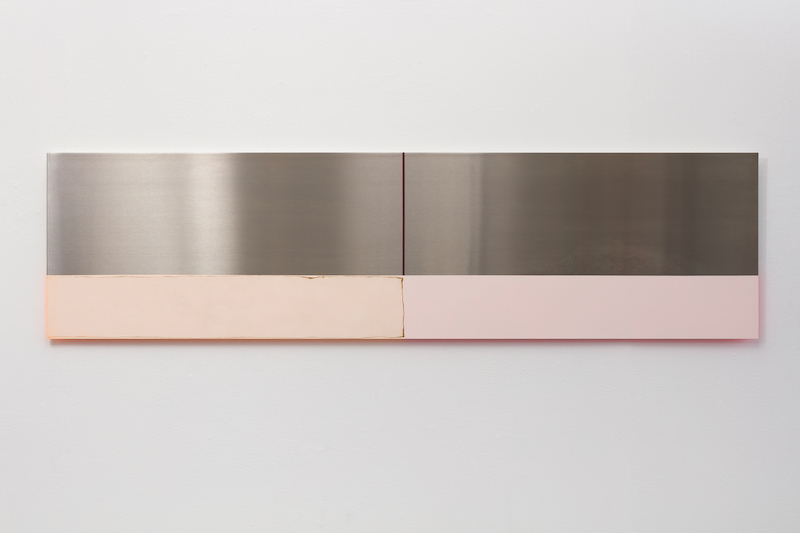Jane Bustin:Making Meaning
In Jane Bustin’s London studio, porcelain, latex, copper and silk mesh seamlessly with elements more readily associated with painting – reminding us that the medium is only limited by the mind.
Words: Andrew Frost
JANE BUSTIN’S ELEGANT and intriguing work proposes an interesting question: What can be considered a painting? Using a diverse array of mixed media including ceramics, pigments and found objects, Bustin’s works combine a conceptual approach to her subject. “I’m interested in the organic, material qualities of how a painting is constructed,” says the artist. “From the type of support – wood, metal, silk – to the properties of pigment, binders, the effect of light, the physicality of material and the effect of illusion. In short, the total process of the physical experiences of making and looking at a surface on the wall. I want to make artworks that describe the feeling of making a painting.”
While Bustin’s works have an apparent affinity with minimalism, they often arise from the artist’s response to the tradition of classical portraiture. And it’s just such a body of work that Sydney and Auckland’s Fox Jensen / Fox Jensen McCrory present at this year’s Art Basel Hong Kong. “These are paintings that were conceived as portraits but without a figurative element,” says Bustin. “This has been a familiar subject for many of my works – that while monochromatic, they take their subject matter and titles from characters found in literature, religion, art history and music. For example, Tabitha relates to St. Tabitha in Masaccio’s fresco at Brancacci Chapel. Mariana Princess of Austria to Velasquez. And a self-portrait Do you be, Meredith and me – combining my body measurements with materials such as stainless steel, hand-dyed burnt silk, acrylic – is influenced by the work of composer Meredith Monk.”
Born in 1964, Bustin studied at the Portsmouth Polytechnic (now the University of Portsmouth). After graduating, she established an extensive exhibiting career both in the UK and beyond. It was one such exhibition in New York in 2017 that captured the attention of gallerist Andrew Jensen. “Seeing the work was a delight,” recalls Jensen. “I was unprepared for the work’s complexity and clarity. The manner in which Jane combines materials – the structuring and formality that secures a composition then leavened by a delicate sensibility… It was extraordinary.”
Of staging the intimate work in an art fair – a context that’s often busy and crowded – Jensen sees Bustin’s work as offering viewers a welcome reprieve. “It was my joy and excitement to first see this modest work – so considered in its making and thinking, so carefully judged against the familiar throng of loud and large in New York – and know that it feels terribly important right now,” says the galleriest. “Like a rebuff or antidote to bluster and noise.”
With a productive output of work and a commitment to her artistic research, Bustin regards what she makes as the result not just of a process, but a sensitivity. “While I think about the importance of the formal qualities of making a painting, it’s also essential to me that the paintings have a meaning,” she says. With meaning and process combined, and with an obvious drive for exploring possibilities, Bustin’s work suggests that what can be considered a painting doesn’t need to be limited by expectation.
This article was originally published in Art Basel Hong Kong Special Edition Art Collector 2019.









